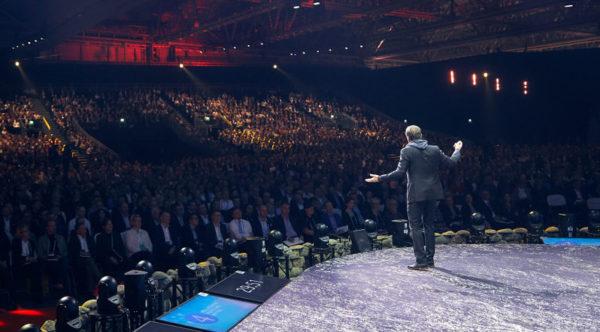17Jan2022
It’s somewhat of an understatement to say that a lot has happened in the world over the past two years. So, it makes sense that also the world of work—and therefore the world of leadership—has been affected by all the turbulence.
Based on what our speakers highlighted last year, we collected 4 trends that influence the way leaders guide, motivate, and develop their employees in 2022 and beyond.
Remote and Hybrid Work Becomes a Standard
Let’s start with the obvious one. Since March 2020, especially knowledge workers around the world have been accustomed to remote work. Increasingly, this hybrid and remote setting is becoming a standard.
However, according to many speakers and guests at our events last year, some leaders are struggling with the feeling of losing control over their employees. On the other hand, Jitske Kramer explained that when she asked people what they liked about the way of working during the pandemic, the most common response was freedom.
Especially due to the intense competition over talented workers, leaders are faced with the fact that flexibility in terms of where people work is starting to become the expected standard.
So, how should you approach hybrid work as a leader? As people also long for connection, companies need to find a hybrid model that allows freedom but simultaneously creates connections in the organization. According to Jitske, there’s no one-size-fits-all approach when it comes to hybrid work. When figuring out what would be the best model for your organization going forward, Jitske advised to consider the following questions:
- What is your mission and purpose, the soul of the organization?
- What are your activities and organizational goals?
- What are your preferences and wishes, and who are your people and customers?
The Importance of Diversity, Equity, and Inclusion
If you have read any news recently, you must have seen this yourself. The growing importance and awareness around diversity, equity, and inclusion are trending in politics, sports, culture, business, and the list goes on.
Many of our speakers, like Carla Harris and Rana el Caliouby have also highlighted how leaders should be more intentional about these things. Both emphasized that diversity, equity, and inclusion are not issues that happen accidentally.
“We need to make sure that our organizations are inclusive about these voices. It’s not enough to bring diverse people to the table. We also need to listen to what they have to say”, Rana underlined.
But what should leaders do to make sure their organizations are responding to this growing importance of diversity and inclusion. According to Rana, you should start by taking these actions:
- Look at the team composition on different levels of your organization. Are all the levels diverse and inclusive?
- Think about the priorities of your company. Is diversity on your list? If it isn’t, you are not really being intentional about it which means that it’s not going to happen.
The Need for Continous Innovation
The disruption and volatility around the world have obviously forced many companies and industries to reinvent themselves. Innovation has been on the top of the agenda for a long time, but increasingly, leaders across industries are confronted with the fact that innovation is not just a “nice-to-have” but that it’s actually imperative.
What many of our speakers from Randi Zuckerberg to Costas Markides have argued is that leaders simply need to get used to the fact that continuous innovation is the name of the game.
So, what can you do to meet the need for continuous innovation? It ain’t easy and it ain’t quick, but the good news is that there are many things you can do to improve.
- Learn about innovation, practice it, and invest in it
- Motivate and empower your team to work under continuous disruption
- Get comfortable with uncertainty by practicing it
The Need for Sustainable Actions
Greenhouse gas concentrations are at their highest levels in 2 million years and the emissions continue to rise. Climate change has caused intense droughts, water scarcity, severe fires, rising sea levels, flooding, melting polar ice, catastrophic storms, and declining biodiversity, among many other things. Now, it’s evitable that individuals, governments, and businesses alike need to do whatever they can to save the planet.
Many of our speakers like Al Gore, Richard Quest, and Paul Polman have stressed how important it is for business leaders to understand climate change and its effects. Richard pointed out that in terms of the climate crisis, the heavy lifting actually needs to be done by us: the businesses and the people. Paul, on the other hand, underlined that “the cost of not acting is higher than the cost of acting”, so it’s firmly in a company’s interests to make change happen.
So, what should you do in terms of sustainability? Richard suggested, that leaders across industries should consider:
- What’s your target and your duty? When do you have to become net-zero by? (Take into account not only you and your business but also your supply chain and your supply chain’s supply chain.)
- What do you need to get there? How are you going to raise the necessary capital that will enable you to reach the targets?
To learn about the upcoming business trends and topics, join us in Helsinki next September to learn from bestselling authors like Yuval Noah Harari and Rutger Bregman, and the #1 Management Thinker in the World, Amy Edmondson.

 by:
by: 
